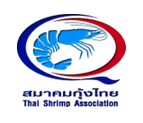As the clock struck 12 midnight and the New Year was rung in on January 1, there was little celebration among Thai exporters of shrimp, fish, meat and a raft of other products to the European Union. That was the time when the EU cancelled the Generalized Scheme of Preferences with Thailand, as Brussels figures that the Southeast Asian nation’s per capita income now exceeds the GSP rate.
The bottom line is that tariff privileges have been removed from more than 6,000 items ranging from prawns to air conditioners, making them much less competitive on the European market. The duty on frozen shrimp, for example, has skyrocketed from 4.2% to as much as 12%, while the tariff on tuna has risen from 18.5% to 22%.
The EU absorbed 14% of Thailand’s nearly EUR 5.6 billion worth of fishery product exports during 2013, while USA and Japan took 22% and 21%, respectively. Canned tuna and frozen shrimp are the two biggest items, accounting for 34% (EUR 1.9 billion) and 31% (EUR 1.7 billion), respectively.
 Meanwhile, remaining optimistic regardless of the EU tariff hike, the Thai Frozen Foods Association expects global exports to advance by almost 30% in 2015, as the nation’s farmed shrimp sector is expected to recover from low output performances in recent years caused by early mortality syndrome (EMS) disease problems. It has projected that shipment value will increase to 130 billion baht from 100 billion in 2014.
Meanwhile, remaining optimistic regardless of the EU tariff hike, the Thai Frozen Foods Association expects global exports to advance by almost 30% in 2015, as the nation’s farmed shrimp sector is expected to recover from low output performances in recent years caused by early mortality syndrome (EMS) disease problems. It has projected that shipment value will increase to 130 billion baht from 100 billion in 2014.
 The TFFA believes that shrimp production will reach 300,00 tons next year, valued at approximately 80 billion baht. The Thai Shrimp Association (TSA) estimates that output will range between 250,000 and 300,000 tons, of which 180,000 to 200,000 tons worth 75-80 billion baht will be exported.
The TFFA believes that shrimp production will reach 300,00 tons next year, valued at approximately 80 billion baht. The Thai Shrimp Association (TSA) estimates that output will range between 250,000 and 300,000 tons, of which 180,000 to 200,000 tons worth 75-80 billion baht will be exported.
During the first 10 months of 2014, exports of Thai shrimp weighed in at 130,000 tons, which was 26% less than output realized during the same period in 2013. Its value of 51 billion baht, however, was down by only 8%.
Before the outbreak of early mortality syndrome, Thai shrimp producers averaged production of between 500,000 and 600,000 tons per annum. Meanwhile, even as some observers are convinced that the EMS epidemic seems to be waning, Daniel Gruenberg says that there is now another problem that farmers in eastern Thailand must cope with.
They “are being inundated by the white spot virus (WSSV) on top of the ongoing onslaught from early mortality syndrome and a microspordian infection,” reported the senior consultant at Acquestra in The Shrimp List mailing to shrimp farmers dispatched on December 24. “A large farm just stocked 100 ponds with new postlarvae and 96 of them were hit with EMS, while the remaining four were hit with WSSV. This 100% failure on a large, well-run farm is a good indication that things are still very tough in Thailand. This pattern is typical of what I am seeing in eastern Thailand.”
Gruenberg, who was trained in microbiology and immunology at the University of Minnesota School of Medicine in the USA and furthered his studies at Hokkaido University in Japan, continued: Recently, there has been a dip in shrimp prices in Thailand. I think it’s due to the emergency harvest of small animals from ponds that have been hit with diseases. Thai processors have a hard time selling shrimp that are less than ten grams. Low prices, combined with the WSSV scare and low temperatures, lead me to think that 2015 will get off to a slow start. Many people are working very hard to come up with solutions to the disease problems in Thailand. Let’s hope they find something that works.”





